It’s been over 20 years since the last console Kid Icarus game. And even after it was announced, Kid Icarus: Uprising has seen some delays –it was initially intended as a 3DS launch title. How does this latest adventure bode for Pit’s future? Should he take another 20+ year hiatus?
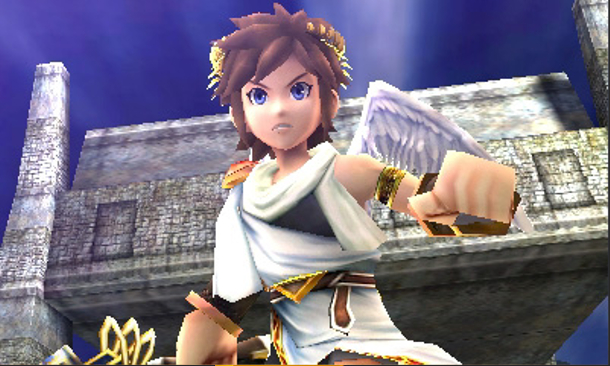
Uprising takes place right after the second game, Of Myths and Monsters, that was released for the GameBoy. Though I don’t know where this 3DS title fits within the series’ timeline, judging by all the in-game wink-wink nods this would fall likely after the original on the NES, as it is humorously referenced through out the game.
That said, if you aren’t as familiar with Pit’s roots then don’t worry; the game takes a delightfully lighthearted approach to “reminding” the player of Pit’s past. What I absolutely loved about this game was the unexpected sense of humor. This was genuinely funny — not ironically funny, but “pun-tastic/nerd-culture/snarky-dialog” kind of funny. I laughed out loud more than a couple times. This was a complete surprise for me coming in, and one that I think most people will enjoy, though a smaller section might be annoyed by it.
This game has the sense of humor of a Paper Mario title, with the dialog being fully voice acted — another surprise, especially from a first party Nintendo title. The voices were pitch perfect for the eccentric characters, and seemed to really get the overall sense of humor the game was going for. Before going further on the voice acting and storytelling, let me take a few steps back to explain the basic game play, and how the storytelling is actually integrated.
About 40-50% of the game plays ostensibly like a bullet-hell type “shmup”. One could be forgiven for mistaking it as something out of a Star Fox game at first sight. You control Pit via the circle pad and use the stylus control, almost like an analog stick/mouse combination, to aim the reticule. The shoulder buttons are reserved for shooting, especially during flight battles. The other half of the game plays like a 3rd person over-the-shoulder action shooter, where again you move Pit on the ground in 3D space via circle pad, with the stylus to aim. This is somewhat like the controls in the Metroid Prime: Hunters game on the original DS, but not as good. For many people that will be a huge hurdle for getting into this game.
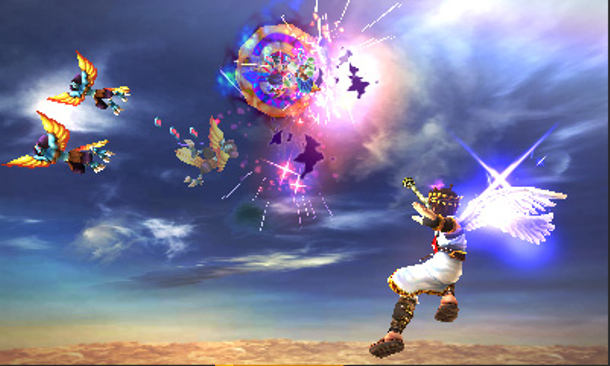
However, as the actions scenes are playing out (both in the air and on ground), there is wonderful dialog between Pit and the goddess of light he serves, Lady Palutena. Of course, as you progress in the game you meet a strange cast of characters who chime in on the banter as well. It sustained my interest the whole time. I really felt like I had a buddy to talk to while I ventured forth to save the “whatevers” from the “something-or-others”. The story is kind of takes a convoluted and crazy turn as it goes forth, but for what it was, and how it was voice acted, I still really enjoyed it. The “flight” portions look absolutely stunning with the 3D turned on. These air battles are what the game was designed to showcase. The on-foot portions, however, impact the game in the negative, substantially.
The control in the air could be seen as complex to someone not used to stylus controls, but extremely fun once you get the hang of it. The on foot portion take quite the dexterity and, frankly, a dash of luck. Never did I feel fully in control while in the ground sections, but I did get significantly better at it, to the point that I didn’t dread it. So, there is definitely depth here for the hand contorting (it’s no Monster Hunter claw, I’ll give it that), but I fear nothing but utter frustration for the casual gamer, and basically an unplayable game for left handers.
I even asked a left handed friend of mine, a stereotypical hardcore gamer, to play for a bit. He fiddled with all the control customizations, but ultimately,it looked like he was trying to pat his head and rub his tummy when playing the first few levels. After a while he shut the lid on the 3DS and said “yeah… this isn’t happening”. I even tried reversing the controls and playing with my left hand, and am pretty sure this is exactly how my friend felt. I will say that if you are right handed, and don’t mind stylus controls, the default configuration seemed comfortable enough (given what you have to work with). Clearly Nintendo thought comfort was going to be an issue, as they packed in a stand to take the “grip” burden off of your hand. The stand didn’t really do much for me, though, as I played 90% of the game curled up in bed or on the couch, and really didn’t have much of an issue other than the normal discomfort of playing a small handheld for hours.
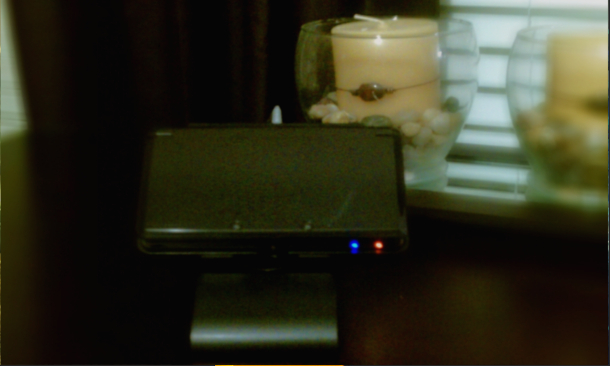
Unfortunately, while there is a decent amount of control customization, I doubt anyone can come up with the perfect setup to allow the ground portions to play like they should. We will always feel like something is off or the precision is lacking. Even after trying other options (like mapping the A, B, X, Y as a “second” analog stick), the stylus still felt more “natural” with the default setup.
Now, to mention that this game was developed by Super Smash Bros. legend Masahiro Sakurai may just sound like needless trivia, but the game actually takes many inspirations in odd places from the Smash Bros. games, not to mention animations, sound effects and menu layouts similar to the Wii iteration. As an example, Pit moves on the ground areas similarly to how he does in Brawl. This was where I had the most problem with the controls: in order to just move Pit in a normal you have to just slowly move the circle pad. For Pit to run or dodge out of the way, you have to kind of “slam” the circle pad in that specific direction, again similarly to Smash Bros. In fact, a tutorial movie on the cartridge makes this exact analogy (with a joke about the game being called something “like Super Smash Sisters”). The problem is, in the heat of battle or trying to navigate an inexplicable platforming section, you don’t dash when you mean to, and when you you tend to go right off of a cliff by accident. The ground sections can be fun at some points, and it’s also where most of the great boss battles happen, but they just don’t seem consistent throughout. The rules for what can and can’t happen on the ground change, and never seem to feel “right”.
Platforming sections require you to walk to a ledge then “dash” to auto jump, run past some blowing winds, or slide on icy floors. While the controls already feel slippery, it makes for some very unnecessary frustrations. There are even some random vehicle sections that range from “meh” to “dear god make this stop!” Had the ground sections been scaled back to 25% of the game, boy we would have a winner on (in?) our hands.
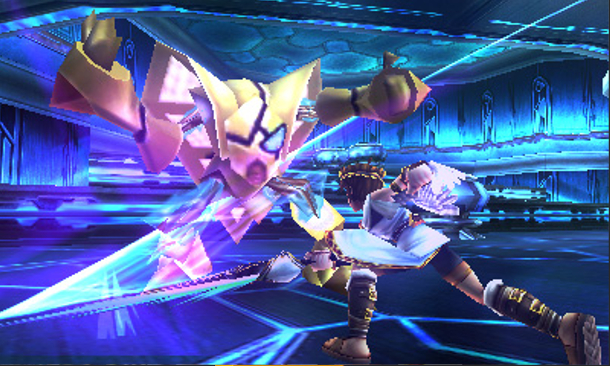
The last important topic in relation to the main campaign is this game’s approach to difficulty, which I think could set a new bar in handling the age-old problem of difficulty balance. As you begin each Chapter, there is an option to increase the intensity (difficulty) of the level and wager hearts (currency) that can be gained once the level is completed at that intensity. There is enough of a risk/reward that prevents you from going crazy, but also doesn’t keep you on the easy setting for long. A nice feature is that when you fail it moves the intensity scale down, at the cost of some hearts. When you haven’t died it sensibly moves you up the intensity scale, as a suggested starting point for each new level. I really didn’t care much for the wagering aspect — I had tons of hearts by the end of the game, and didn’t dive much into the vast weapon customization system in this game to really use this currency. What I did like was how it continued to keep the pace up; I never got stuck on a boss because I couldn’t eek it out to win. At just a slightly lower difficultly level, it made it less frustrating.
But, there are still some flaws with this idea. There were a few levels were I just kept dying on an asinine platforming section. By the time I got to the boss, I was already at the standard difficulty, which made the battles too easy. But overall an adaptive type system like this could benefit more games. Throughout the whole experience, the game strives to have balance from the difficulty, to the weapon load-outs, to the special abilities.
The visuals are the best to date on the 3DS. With all of the craziness thrown on screen at once, there are very few frame-rate issues. The game does an amazing job of making areas feel epic and huge, and you won’t really see the same environment twice, which is impressive. What you will see are some cheap moves to “extend” game play, like the “Mega Man-esque” style of fighting bosses over and over again. There are also areas that rely on wave after wave of enemies, even so much as an 11-wave section that, frankly, is absurd even if you only did that once in the whole game. There are a varied amount of enemies that can get unbelievably wacky (treasure chests with sexy burlesque style legs?) but for the most part, the approach to killing them doesn’t really change.
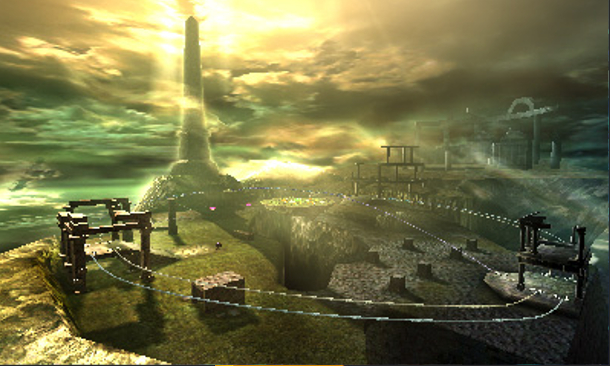
All in all, this game has everything: Amazing visuals? You bet. Sweeping orchestral sound scores, and cute 8-bit homages? Yes, sir. Unique game play? And then some! Treasures, unlockables, augmented reality integration, on-line play? Oh yeah. But it’s also unfortunate that 50% of this game is hindered simply by how it controls. There are sections of the population who I truly don’t believe could physically play this game (sorry lefties). No matter how you customize it, it will be a less than ideal setup. I want more Kid Icarus, I want more of the light hearted story, I want more of this kind of voice acting, I just hope we get to see it in better form. All the pieces are here for an amazing experience, they just need to be rearranged. But, for a 20+ year hiatus, this isn’t a terrible way for Pit to get back into the game.
Game images provided by Nintendo. This review is based on a purchased copy of the game. The game was played to completion of the main story, extra features were explored (AR Cards, weapon forging, Street Pass), a few on-line matches were played.

No Comments